When I first arrived in Buenos Aires and was hanging out with Eleanor and Jared, they pointed out to me the preponderance of mullets, a haircut that was popular in the 80`s/early 90`s in the states. If you don`t know what a mullet is, I strongly advise going to google.com and educating yourself. You may be sporting one and not even know it! Anyway, why the talk about mullets? Well, on the bus between Salta, Argentina (where I was essentially stuck for an extra day due to few-and-far-between departure schedules) and San Pedro de Atacama, Chile, a really sweet, young, Argentinian woman sat across from me. She definitely belonged in the mullet club. Then I realized that Delfin (from Spain), whom I had been travelling with for a few days also had a mullet which was always under a hat. It`s just funny to see how entirely arbitrary and subjective fads and fashions are. The newest and latest here could be a fashion faux pas in the U.S., depending on who you ask.
The ten hour bus ride to San Pedro de Atacama definitely had it`s highlights. Not even an hour outside Salta, the bus came to a screeching halt behind a line of traffic stopped in the road. As all of us passengers craned our necks to see what the problem was, we saw the road up ahead laden with a huge group of people on either side. Robbery crossed my mind, but from what I hear, roadside bandits aren`t usually so methodical. Protests are really common here, largely due to overt government corruption (as opposed to the generally clandestine manipulation and deceit of more industrialized countries). One of the best ways to get people to listen is to affect their lives: this is often accomplished by shutting down roads. Suddenly instead of 100,000 people who want to do away with poor wages for laborers, you`ve got 500,000. The young woman with the mullet asked some folks outside the window about what was going on, and I heard them report that a road slide had blocked the road (“Both sides?” she asked). According to the bystanders, the road wouldn`t be open until three p.m. the following day. Great. Just great. I`ve already burned almost two days in Salta, and now this! You never know, though. So I crossed my fingers and opened my book. Sure enough, twenty minutes later the bus kicked into gear and we were on our way. As we passed the conglomeration of people on the road, I searched for clues as to what exactly they were doing. Best I could tell, the ditch was some kind of homeless camp with people coming out in droves carrying their bags full of their belongings. Once again, I am quite thankful that I have the resources not to have to sleep in a ditch alongside the highway every night.
As I tossed and turned in my seat on the bus, I realized, also, how thankful I am for my size. Not so small that I lack the physical presence that makes me feel capable and safe, but small enough to fit comfortably (and in several positions) into the minimal spaces offered on buses and airplanes. Anyone with legs longer than mine would have died on this bus. The cheap ones always have less leg room. No problem for me, though. They also have no T.V. to entertain you with movies, which I absolutely adore. If I`ve got the light of the sun, I`d much rather enjoy the scenery and my books without the sound of Jim Carrey`s voice blaring from the speaker eight inches above my head.
Speaking of scenery, the landscape on way to San Pedro de Atacama was much like that of Cafayate, but less remarkable than what I had seen before and quickly gave way to desert-like conditions. In several places, the road when right through the salares… dried up saline lakes that have left the ground blindingly white. It was really interesting to me that we would drive right through and environment that is so unique, but I guess maybe it`s only unique to me and not worth the extra money to build around it.
During the ride, I got to see my first baby llama! It was so CUTE! The llamas (I assume domesticated, but maybe not) were just hanging out alongside the roads like cattle. As we lumbered slowly uphill past them, they all got as far from the road as possibly (usually only 5 – 30 ft. in most places) and faced away from the bus. It was really strange. About half an hour later, we happened upon a building literally in the middle of nowhere. To my surprise, we slowed down and pulled in! I`m finding out that this is actually quite common. Buses are kind of like airplanes here in that the ticket usually comes with a meal or two (depending on the length of your ride) and each bus has at least one steward (always male) that turns the movies on and off, opens and closes the curtains and vents, serves the meals, and helps the passengers with their needs. Companies also often have their own restaurants in rather obscure locations, which explained our stop. We were here for our lunch!
I headed directly to the bathroom, where I once again wished I had my dictionary. There are always signs above the toilet telling you what to do with your toilet paper (in some places the plumbing can`t handle the paper and in others it can), but I never remember to look up the key vocab words. From the beginning, just to be safe, I was always tossing it in the trash in effort to avoid an embarrassing incident of a clogged and overflowing toilet. However, when I encountered a trash can with a sign on it indicating that you should NOT put your toilet paper in the garbage, I decided to break out the dictionary (thanks again, Kieran). Here you have it: inodoro = toilet, cesto = garbage can. No arrojar el papel en el cesto. Don`t throw your toilet paper in the trash. Check. More common, however, is, “Por favor, nunca tirar NADA ni papel en el inodoro.” Please, never throw ANYTHING, including toilet paper, in the toilet. One cultural hurdle down, ten to go!
At lunch, I met some other travellers. Funny to see how uncomfortable people are with difference. All the gringo travellers clustered at two or three different tables, and all the more local travellers formed groups at other tables. I met two young british women, both very nice, and an awful Australian. He had to be the most discourteous person I`ve encountered thus far. He had nothing but negative comments about the different ways of doing things in the countries he had travelled in, and complained incessantly and righteously about the bus company and the food (neither of which were particularly appalling). I wanted to tell him that if he was going to continue being so intolerant and narrow-minded, he`d be better off going directly back to Australia where he could bask in his undeserved privilege. Grrr! It`s really disappointing to meet people like this. When locals do have negative opinions of travellers, I think it stems from interacting with people like this guy. And speaking of local opinions, there is definitely a stereotype about young travellers. Nearly every hostel I check into sees fit to inform me immediately of parties that will be taking place, locations and closing times of the local dance clubs, and the nearest place to buy alcohol. I just have to laugh out loud; if I wanted to drink myself silly for six weeks straight, I could do it for a lot cheaper in the states. Why travel if you`re just going to live the same life and do the same things you`d be doing back home? Ack! Anyway…
When we left our lunch spot and headed back out across the plains, the paved road politely excused itself for the next several hundred miles. So much for reading. It was really strange to be humming along a stretch of bladed desert at 65 mph, for hours on end. We were gaining in elevation, though. The bleak, boring view out the window didn`t change, but the temperature did. Before I knew it, we were surround by snow patches in a landscape that resembled what Wyoming/Eastern Oregon might look like after getting hit with a nuclear bomb. To my dismay, I`m not invincible to the altitude. I first noticed it on the bus shortly before lunch. I was reading my guide book when I suddenly felt like I desperately needed air. The same feeling you get when you swim to the bottom of the pool and stay too long. It only had to happen twice before I realized what was going on. I can`t wait to see how I fare in LaPaz, Bolivia, the highest capital city in the world (12,078 ft.) or at the world`s highest geyser field tomorrow (14,190 ft.).
When we finally arrived in San Pedro de Atacama, we had to go through customs before we could go into town. We had stopped about a hundred miles back at the Argentina exit point, but there had been no Chilean entry point. This is the first time the office hasn`t been right on the border, so it was a little strange. It was the same rigamrole as the last time I went into Chile. They are way more strict than any other country I`ve ever been too. They search everyone always. When we got off the bus, they had laid out a foam pad soaked with some kind of chemical. This was to be everyone`s first step. Thank goodness Chaco makes their sandal pads so thick. It would have been so nasty if the grimy liquid came spilling into my shoes. Ew! After the shoe cleaning and passport stamping, they brought a drug dog around. If the dog stopped at your pack, you were doomed to have absolutely every item taken out and looked out. Upon entry to the screening room I saw a young woman about my age who had suffered this fate repacking her bag. When I tried to get back on the bus after the screening, I found out that customs was also the bus stop, and arrival to San Pedro was by foot. Ummm…okay. That would explain the hostel hawkers. One guy was especially adamant trying to get me to go with him. I found the british women and invited them along for the ride, since there was no way I was getting into a car with this guy. Shortly thereafter, I found out by “come with me, I`ll take you” he meant, “I`ll walk you to the hostel.” Oh. Okay then.
The streets of San Pedro are really neat. It`s this great idyllic desert village with a very authentic feel to it. Lots of quaint little restaurants. The hostel was nice… more hotel-ish in that they didn`t have dorm beds. There were doubles and triples, all going for the same rate. At first I was disappointed that the british women weren`t keen on the idea of a triple (once I left, they`d be stuck with whoever the hostel chose to put with them). However, when I walked into my own private double, I was quite pleased with the way things had worked out. It was the first time I`ve had my own room in a place that WASN`T a total dive. Awesome! The showers were HOT, but quick. They don`t have much water in the desert, so conservation is a must. Also, the water is often heated by wood fires, which means that you`re consuming a huge amount of resources. It struck me how much I take for granted a nice, long, hot shower that goes for pennies in the U.S.
An Australian couple on their honeymoon had also just arrived at the hostel, so we invited them out to dinner. The two brits have a travel website that they wanted to update, so we spent some quality time in front of the computers before we ate. It was SO expensive! I swear, internet is the bane of a traveller`s existence, and yet entirely fantastic at the same time. When I get behind on journal entries, I start to get stressed out about it. Also, I have an unfortunate knack for detail, which means writing about a single day can take me upwards of an hour, sometimes almost two. I usually manage to relegate my usage times to days/hours when I`m just hanging out in a bus station waiting for a bus or when a museum sounds far less interesting than catching up on my journal. The upside to the internet is, when I`ve had a really rough go of it (i.e. having to face challenge after challenge alone with no moral support), it`s great to get to an internet cafè and find messages waiting from friends and family. Very comforting.
We had dinner at the nicest restaurant I`ve eaten in down here (I usually stay away from the expensive stuff). They had a $1 cover per person for the FANTASTIC music, and a warm fire very near our table. I finally got to try the national drink, Pisco sour. It`s a white grape brandy mixed with lime juice, among other things. Like a margarita, only more acidic. It was good, but REALLY strong. It didn`t go all that well with my dinner, which was also a tale to be told. As I was scanning the cheap dishes on the menu (starting at $7), I came across “avacado pasta.” It was either pasta or pizza if I was going to keep from breaking the bank, so I got it. It was basically avacado purèed and poured on penne. When I got to thinking about it, nutritionally it`s just like eating avacado on toast. While strange, it tasted great!
We were all beat after the long day of travelling, so we headed home. Walking in the front gate, Kirstin, one of the brits, said something about chocolate cake. Truly evil, I thought, and told her so. Much to my surprise, they were harboring a stash in their room and invited me to join them. Yum! After twenty minutes of travel talk, I retired to my own room. Thank goodness I had asked Xena for the time before I left; I almost forget the time difference between Chile and Argentina. I set my alarm for my necessary 3:45 a.m. rousing to go on the tour to the El Tatio geyser field, world`s highest, the following day. I can`t believe how fast time is going down here! My trip is almost half way over already!
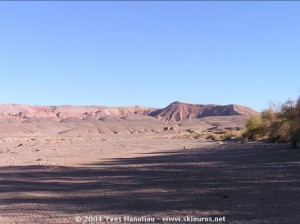
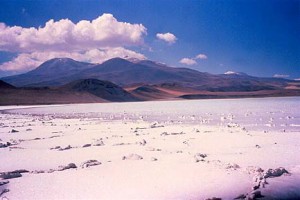
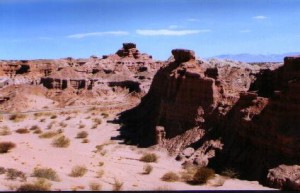
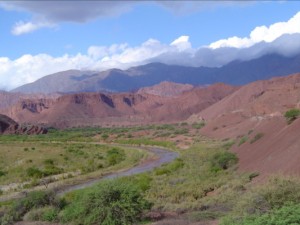
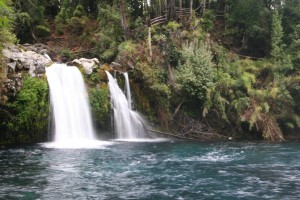
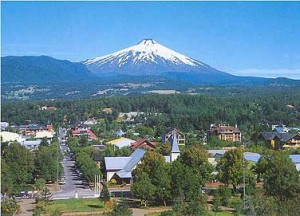

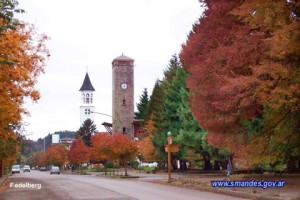




Twitter Facebook Google+ StumbleUpon Reddit Pinterest